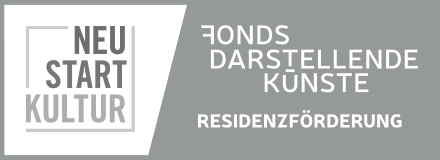
Introduction
Layers of Intimacy is a practical and artistic research into the worlds of composition and sensuality. How do we make decisions when being intimate and/or composing sex with each other? What are the skills, nuanced sensibilities and compositional intelligences at work, and how do we train them? We are building upon an existing improvisation method, Present Time Composition (PTC) by Dr. Alan Bern, and using other forms and platforms of embodied practice, research and explorations; interviews, questions of reverse engineering, literature and film research, participatory observation at play parties, etc. This is week #2 of our time together at the Sensemble Theater in Augsburg, within our Flausen+ residency!
Making PTC_sex
PTC is an improvisation method and learning framework for collectively improvised, highly differentiated performance works, drawing upon and honing our ability to quickly make coordinated, nuanced decisions. Our ensemble trainings of PTC in the context of (kin-)aesthetic choices during sex have been an embodied practice beginning with identification of ‘impulses’. ‘Impulse’ is defined as any information-stimulus urging a cognitive system to make a decision and/or change the current state. Impulses are understood as any kind of shift, ‘anything that happens’, in the perception of the improviser.
To recognize impulses as soon as they arrive, and to let them pass if not appropriate to the specific improvised situation, is a skill deeply relevant to all forms of intimacy. To make compositionally ‘interesting’ and ‘pleasurable’ decisions, one is both a composer, noting patterns of impulses that arise, and a performer, acting them out. A compositional perspective should underlie each performer action. Understanding, practicing and developing improvisational skills as simultaneous composer-performers of our own PTC_sex co-creations demands precise attunement to social norms, isolated compositional elements, and poetic subtleties in the negotiation of form and meaning. We have shared our bodies and minds with one another, developing our relational trust and collective harmonies with each day of research, and the layers are thickening and multiplying.
Week #2
After extended time together, we have been able to pass through multiple difficult layers, emotional or physical, that covered the depth of what working with intimacy calls upon. The frame of PTC_sex being a vulnerability-exposing process allows for deeper emotions to rise up and become part of the materials we work within. This validates our work as having delved into something of relevance that we also feel echoing into our private lives.
During this second week, we experimented with outdoor sessions, which led to playful variations using our surroundings be they trees, riverbed stones, or drips of water. We began to isolate certain compositional dimensions, including a focus on the parameters of sound. There became a pattern of sound overpowering other compositional elements or calling in related attractor states, so that ultimately we decided to ‘turn down the volume’ of this focus to 30%.
Because sex and composition are inherently diametric in that sex is generally improvised, our leading questions throughout a two-hour long chat with Dr. Bern were about notation and reverse engineering. Specifically, how do we translate compositions of sex, and how can sex be composed in a matter that is as rewarding as an improvised meeting of bodies? Another question that continues to loom is with regard to performativity as related to internal experience, leading to an experimental field of including ways of playing with the “public / private” dimension within the improvisations.
The fact that we are already halfway through our month together, realizing that we are only beginning to scratch the surface of what there is to explore and become well-practiced in, points to the fact that this research needs even longer periods of time to methodically move properly into and through.
WEEK 2 – Exercises, activities and try-outs.
A somewhat “complete” list of our research activities
“…Naming something so it can be possible to improvise”
“Play as if this is what the moment called from you”
“Co-creation in the sense that we switch so often no-one knows where the impulse begins”
“If narrative is established then it has to be broken”

Mapping compositional elements, Forms and practices and social dynamics in the making of sex and intimacy
We gathered and mapped (a part of) the territory that we work with. Beginning with an unfiltered movement-to-word association exercise, we culminated in creating hierarchies and potential order within the map. An important differentiation occurred between Compositional dimensions and Elements vs. Forms and Practices. In our work within the frame of PTC and Layers of Intimacy, Compositional dimensions are what we focus on to develop our capacities in creating interesting, pleasurable and connected intimate improvisations. A compositional dimension is the angle from which we look at a form or practice that is evolving. Some examples are: rhythm, space, giving/taking aka active/passive, intensity, narrative and many more. A lot of dimensions happen “at the same time”, and it is important for the performer-composer (the people participating in the improvisation) to figure out “which one is meant” – which dimension stands out, wants to be addressed, is overlooked but would be interesting to develop, etc. Forms and practices, on the other hand, are the ways in which the sensual exchanges take place.

Social dynamics involve our work on patterns – recognising what patterns present themselves and what they point to, and also what they exclude. This includes becoming aware of “attractor states” – phenomena that typically, and often unconsciously, come together but are actually two separate things. A classic example from PTC_music is that “playing louder often leads to playing faster”, as well as “playing softer often leads to playing slower”. The two compositional dimensions at play here (volume and tempo) are separate, and it is important and fruitful to be able to distinguish and include them in our sensual improvisations within Layers of Intimacy. Many cognitive biases also play into the realm of social dynamics we need to work with, creating a “modus operandi” – embracing the social reality of the performer-composers as well as of our socializations, whilst still aiming for a creative, interesting, connected and sustainable development of our intimate practice. This includes working with shame, but also with engrained gendered ideas, prejudices and patterns.
The mapping process is not complete and serves as an ongoing tool on our explorations. Some of the Compositional dimensions are being directly addressed in the frame of newly created exercises, often in the form of “Continuous duos”, a basic working mode in PTC. Some of the noted Forms and Practices will be addressed in exercises and more experiential scores outside of the PTC-related work. This is especially relevant when we realize that as a group we want or need to become more eloquent and experienced within a specific way of working, or when we want to exchange on Forms and Practices that repeatedly emerge as relevant and/or tricky in our Continuous Duos (e.g. qualities and practices of touch, effort, with tools and props, of breath, of power play (dom/sub) and many more).
CONTINUOUS DUOS w focus on SOUND
LOCATION CHANGE // ECO SEX DIMENSIONS
We went to the woods, we went to the Lech river. We connected with trees and living ancestors, We got bitten by mosquitoes a lot.




INTRODUCING LABBING // PARALLEL MATS
Try-out: introducing trios

REVERSE ENGINEERING – WRITING SEXUAL SCORES
1) “the way of getting into it” / the preparatory work for a sexual composition: how do we set the mood, the mind sets, the bodies to be able to go into a specific (or any?) sexual composition
2) the (longer) arches of time creating anticipation, boredom, pauses, change … one of the scores covered a period of over one year (with a long time of anticipating “the moment until it happens”), others whole evenings – how can we induce this competence of working with time and anticipation (and other levels of time-related arches) into our rather short learning-structures of continuous duos? What do we need to learn to be able to improvise them in “jam situations”, like play spaces?
As part of our research, outside of the frame of PTC, we engaged in:
Mentor Dr. Alan Bern online session
Questions that linger:
> Working with and around Performativity – fully embodying and creating the relation as experienced INSIDE the duo (or trio or…) whilst having an “outsider eye”-awareness of the composer, as well as being watched by the non-active members of the improvisations (outside circle) > include options to “hide” – play with the public/private dimension of the sensual play (tried out in the studio and in the woods – deepen!)
> look at the (emotional/psychological) attractor state of touch/constant activity <=/=> affirmation of connection (“I’m here”, “I see you”, “I care”, “I’m with you”..)(insecurities, fear of rejection, resistance to giving up control…)
> how do we de-colonialise our sensual aesthetics? (follow up readings, e.g. “I hope we choose love” – Kai Cheng Thom)
> fill out our MAP more (see above)
all photo credits: https://thisismywork.online/



flausen+headquarters
Alexanderstraße 124
26121 Oldenburg
flausen+gGmbH
Klävemannstraße 16
26122 Oldenburg
Das überregionale Netzwerk flausen+ wird gefördert von dem Beauftragten der Bundesregierung für Kultur und Medien über das Programm “Verbindungen fördern” des Bundesverbands Freie Darstellende Künste e.V.
Gefördert vom Fonds Darstellende Künste aus Mitteln des Beauftragten der Bundesregierung für Kultur und Medien im Rahmen von NEUSTART KULTUR.
Gefördert vom Fonds Darstellende Künste aus Mitteln des Beauftragten der Bundesregierung für Kultur und Medien.



